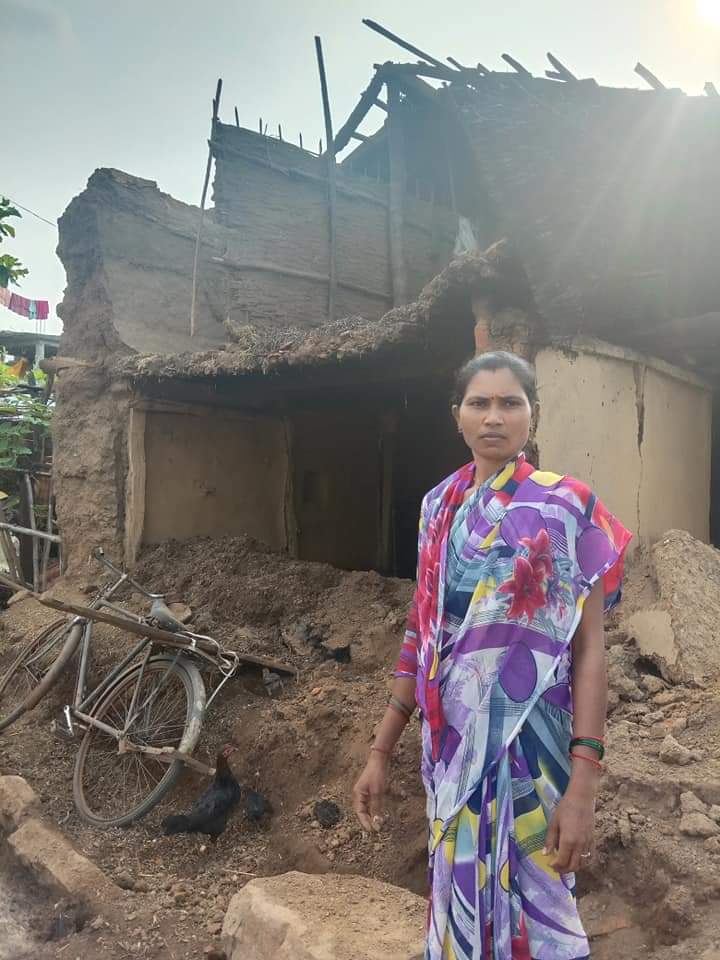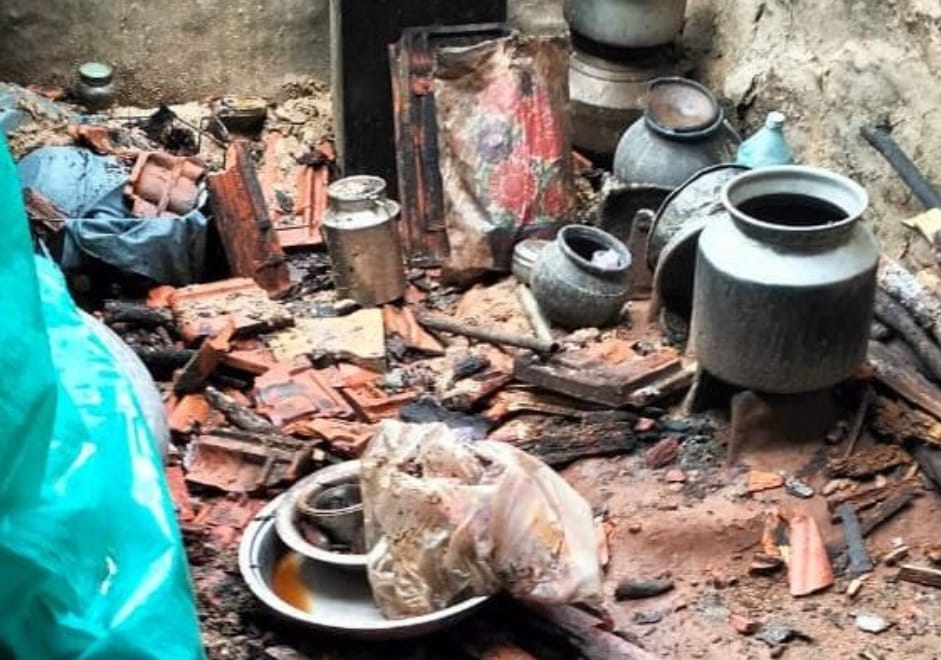Central Government Must Up-date Disaster Assistance Norms
The
rains have ceased in Chandrapur and the government survey teams have started to
visit areas affected for assessment of damage caused by excessive rains and
floods. The survey of crop damage is done by teams led by Circle Revenue
Inspector and Krushi Sahayak while the damage to houses in assessed by teams
lead by Talathi. The initial survey findings are announced at village level and
finalised after objections are filed by local people. The survey process is
going to take several days as the damage is quite extensive across the
district. For instance, according to Ravindra Holi, Tehsildar Mul, the survey
will cover all 112 villages in block. "Survey teams led by Mandal
Adhikaris and Krushi Sahayak will survey around 1500 ha of paddy, 2400 ha of saplings
prepared for transplantation and between 2000 - 3000 ha of cotton. The Talathi
will take stock of fully and partially damaged houses and other damages."
While
the survey goes on, there is already speculation about the exact amount of 'assistance' that the people may expect. These worries are not unfounded because in the past people have received laughably magre amounts. The NDRF and the SDRF are constituted
vide sections 46 and 48 of the Disaster Management Act, 2005.
Out-dated Norms of Assistance
On
8 April 2015 the Central Government issued notification regarding the norms for
assistance to the calamity affected persons and the same were adopted in toto
by the Maharashtra government by a Government Resolution (G.R) dated 13 May 2015.These norms, which provides for the monetary assistance for various items, were adopted for the period 2015-2020. Although a period
of two years have lapsed these norms were not updated either by the central
government or by the state government. In 20220 the Central Government formed an expert committee to make recommendations regarding the revision of
norms but nothing concrete has come out of it and the same norms of 2015 are
still in operation.
The
main problem is that the norms of 2015 are too meagre and the disaster-affected persons are not really helped by such
pittances. It is a cruel joke that the government is playing on the citizens by
making elaborate surveys but providing assistance so little that they do not
cover even a fraction of the losses.
Death and Disability
Ex-gratia payment to families of deceased persons is a mere Rs. 4 Lakhs and for loss of a limb or eye is between Rs.59,100 to Rs. 2 lakhs depending on the extent of disability. The gratuitous relief for families whose livelihood is seriously affected is Rs.60 per adult and Rs.45 per child not housed in relief camps. It is expected that these amounts will be brought at par with the compensation for deaths and disabilities due to wildlife attacks is Rs.10 lakhs and upto Rs.5 Lakhs respectively.
Agriculture
At present assistance
is given to farmers only upto 2 ha of land even if the damage is more than that.
Where the crop loss is up to 33% the norms provide for an input subsidy for
crops, horticulture crops and annual plantation crops which is Rs.6800 per ha
in rainfed areas and restricted to sown areas and Rs. 13,500 per ha in assured
irrigated areas. The subsidy for perennial crops n Rs.18000 per ha.
As in 2019, this year
too vast areas of agricultural land in Chandrapur district have been inundated destroying
the paddy and cotton crops. The compensation for agricultural
losses as per the provisions of the National Disaster Relief Fund is minimal.
The assistance (not compensation) is restricted to between Rs.6800 per hectare
to Rs.18000 per hectare upto 2 hectares of land. A further assistance of upto
Rs.12000 is given for removal for silt from the fields. These amounts are
extremely meagre especially for the rural people who are already reeling under
poverty.
Haridas
Gohane of village, Gram Panchayat member and ex-Sarpanch of village Chitegaon,
taluka Mul said, “I have lost saplings on 11 acres of paddy lands. The seeds
were worth Rs.15000 and if we take in the labour and land preparation costs
then the loss is around Rs. 500000. How can the government compensate me for
only five acres? And that too at such a low rate? The government should
compensate the actual loss of the farmer.”
According
to other farmers too their paddy saplings worth thousands have been washed away
and that too for second or third times. The amount of Rs. 6800 per hectare in
rainfed areas does not even cover a fraction of the losses.
Housing
At present the assistance as per NDRF norms for fully damaged/destroyed houses is Rs.95,100/-. For
partially damaged pukka house where the damage is at least 15% the
assistance is Rs.5,200 /- per house and Rs. Rs.3,200 for kutcha houses. The
assistance for damaged /destroyed huts is a mere Rs.4,100 per hut. Similarly
the assistance for cattle shed is a meagre sum of Rs.2100/- per shed.
These amounts are shamefully low and need to be increased. Today no house can be constructed for such low amounts. In fact, even the amounts paid under the Pradhan Mantri Awas Yojana are upwards of Rs.1.2 lakhs. It is inexplicable why the Central Government continues with norms as low as Rs.4100 for huts - this is insulting the dignity of poor citizens.
Blatant Regional Discrimination
Because the Central Government norms have not been revised since 2015, the state government exercises its discretion in increasing the amounts of assistance or changing the norms. For instance the norms were changed during the floods in 2019 , the Nisarg cyclone in 2020 and the floods in Vidarbha in 2020.The decisions for changing the norms and amounts were taken in cabinet meetings after which G.Rs were issued. Given that there were no set guidelines, there have been multiple G.Rs issued each time a disaster strikes in Maharashtra. In each G.R it is clearly written that the norms will be applied for the that particular calamity only. This has led to different regions getting different treatment at the hands of the state government even though the people are in a similar predicament.
For instance in 2020 there was blatant discrimination against Vidarbha with regard to disaster assistance. There was difference in the assistance extended to the people affected by Cyclone Nisarg in Konkan region and those affected by floods in Vidarbha although both calamities occurred within two months of each other. The assistance for clothes / utensils etc. was a Rs.10,000 in Konkan and Rs.5,000 in Vidarbha. The amount for fully damaged houses was Rs.1,50,000 in Konkan and Rs.95,100 in Vidarbha. The amount for partially damaged houses was Rs.50,000 in Konkan and Rs.6,000 in Vidarbha. Loss of boats and fishing nets was fully compensated in Konkan while not a penny was paid in Vidarbha.
This year the monsoon has severely impacted the entire state of Maharashtra. It is time for the Central Government to wake up and update the disaster assistance norms and in the meanwhile, the state government should stop playing regional favourites even as people suffer.
- Paromita Goswami









0 Comments